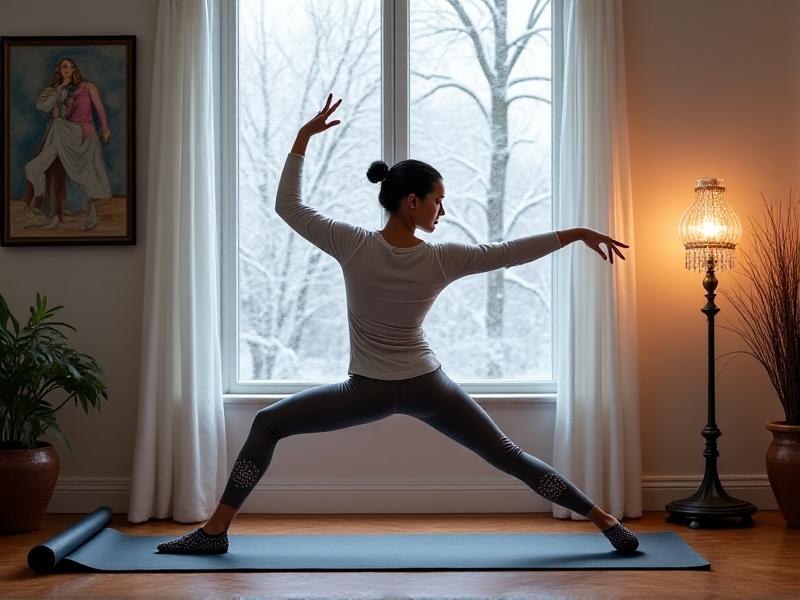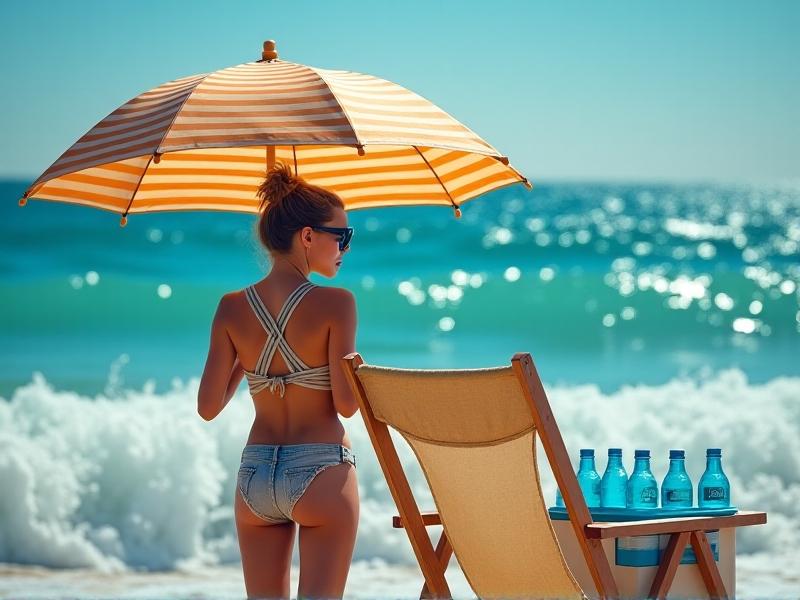```html
Understanding the Link Between Weather and Posture

Weather shapes our bodies in ways we rarely acknowledge. As temperatures fluctuate and daylight hours shift, muscles contract or relax, joints stiffen or loosen, and our spines compensate for environmental stressors. Cold winter air triggers protective hunching, while summer heat encourages sprawling postures that strain the lower back. Humidity impacts connective tissue elasticity, and seasonal activities—from shoveling snow to marathon gardening—introduce unique physical demands. By recognizing these patterns, we can proactively adjust our habits to maintain alignment and comfort year-round.
Winter: Combatting Cold-Induced Stiffness

Arctic blasts transform bodies into tense sculptures. Subzero temperatures cause trapezius muscles to hike toward ears, while icy sidewalks promote shuffling gaits that shorten hip flexors. Counteract this by layering clothing to maintain core warmth without restricting shoulder mobility. Pre-warm cars and workspaces to minimize sudden shivering. Integrate midday "posture resets": press palms against doorframes to reverse hunching, or practice seated spinal twists while breathing deeply. Hydration remains critical—dry indoor heat dehydrates spinal discs, reducing their shock-absorption capacity.
Spring: Transitioning from Sedentary to Active

As thawing earth beckons, bodies accustomed to winter nesting face new challenges. Weekend warriors often strain unprepared lower backs during yardwork. Prepare with two weeks of pre-spring core activation: bird-dog exercises and planks rebuild stabilizing muscles. When planting, alternate between kneeling (using a padded stool) and hip-hinging postures to distribute effort. Beware "text neck" creeping in during increased outdoor photography—hold phones at eye level to prevent cervical strain. Allergies complicate matters; sneezing fits jar misaligned spines, making antihistamines and spinal mobility drills essential allies.
Summer Heat and Its Impact on Spinal Alignment

Sweltering days melt posture discipline. Heat-drained individuals slump in shaded patio chairs, overloading sacroiliac joints. Combat this by choosing breathable, supportive outdoor seating with adjustable recline angles. Hydration directly affects posture—a 2% water loss reduces muscle endurance by 10%. Carry insulated water bottles and infuse water with electrolytes during heatwaves. Pool workouts become posture saviors: floating back extensions neutralize desk-job slouching, while freestyle swimming counter-rotates compressed thoracic vertebrae. Even sunglasses matter—squinting in bright light tenses neck muscles, so opt for polarized lenses.
Autumn: Preparing for Reduced Daylight and Activity
Shorter days trigger dual postural threats: reduced vitamin D weakens bone-supported muscles, while earlier sunsets curtail outdoor walks that naturally counterbalance sitting. Create light-rich environments using 5000K bulbs that mimic daylight, positioning them to eliminate screen glare-induced neck craning. Layer clothing strategically as temperatures seesaw—sudden chills cause reflexive shrugging that strains levator scapulae muscles. Use pumpkin-carving season to practice fine motor skills: precise knife work engages often-neglected forearm flexors that support wrist alignment during typing marathons.
Year-Round Strategies for Weather-Resilient Posture
Consistency trumps seasonal extremes. Invest in a posture-tracking app that sends nudges when barometric pressure drops precipitously—these pressure changes affect joint proprioception. Twice-yearly shoe rotations matter: winter boots with arch support prevent ice-induced gait alterations, while summer sandals with contoured footbeds maintain natural stride length. Sleep posture adapts seasonally—use buckwheat pillows that mold to cervical curves whether side-sleeping in air conditioning or back-sleeping under heavy comforters. Always layer bedding rather than piling thick quilts that restrict nighttime movement.
Ergonomic Adaptations for Seasonal Changes
Transform workspaces into climate-responsive hubs. In humid months, attach anti-slip mats to chair seats to prevent sticky-skin-induced squirming. Winter demands heated mouse pads to prevent cold-stiffened fingers from overgripping. Monitor arms become crucial as daylight angles shift—prevent screen glare in December by tilting displays slightly upward. Automotive ergonomics need seasonal tweaks: use ventilated seat covers in July and heated cushions in January to avoid temperature-related muscle guarding during commutes. Even smartphone holders should rotate between dashboard mounts for summer road trips and bedside stands for winter bedtime scrolling.
Mental Health, Weather, and Postural Habits
Seasonal affective disorder manifests physically through collapsed chest breathing and downward-tilted pelvises. Light therapy lamps should be positioned at eye level to encourage upward gaze that opens the anterior neck chain. Rainy-day meditation sessions can incorporate postural awareness: visualize inhaling into compressed spinal areas while listening to precipitation rhythms. Cold weather often breeds social isolation—virtual movement dates where friends synchronize stretch breaks help maintain accountability. Most crucially, reframe weather as a posture ally: welcome winter's restful inward focus for joint recovery, and summer's expansiveness for thoracic opening.





